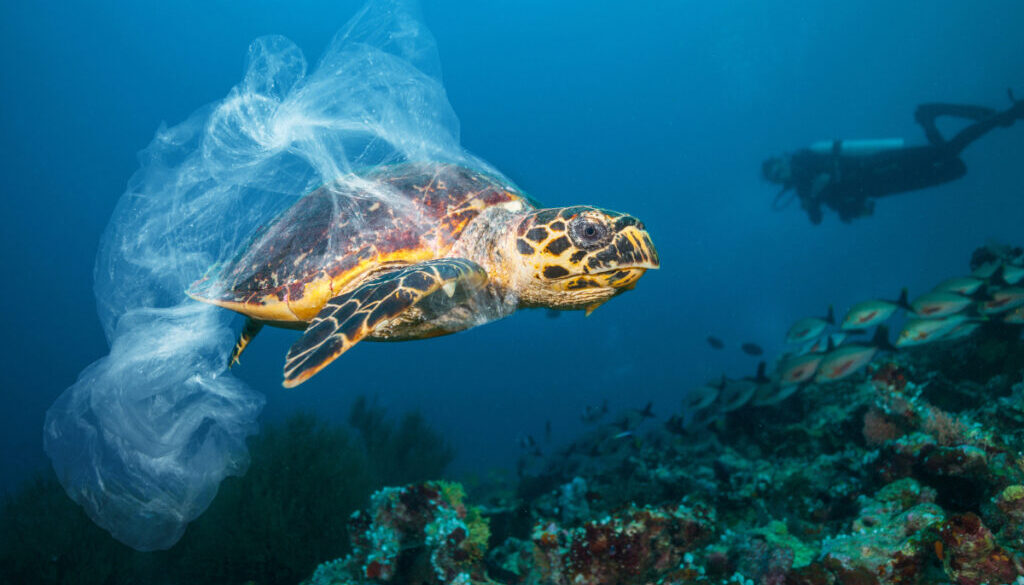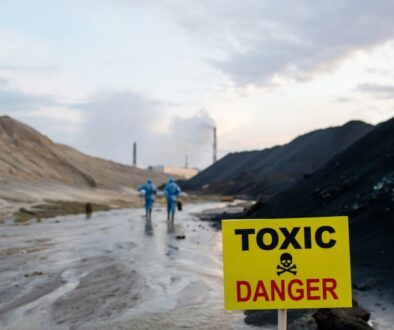Guest column: Innovation and policy need to come together to solve the plastic crisis

By Tony Guo and Julian Picard of Project Earth
We’ve all seen the heart-tugging images – sea turtles with plastic straws stuck in their noses or ducks with plastic beer rings wrapped around their necks. Wildlife officials in Florida this month reported the death of a 47-foot sperm whale, they said was killed by consuming plastics and other trash. The stories grab our attention for a moment, and then we move on. But it is important to understand this: beyond endangering wildlife, plastics also endanger all of us.
Plastic production is responsible for over 850 million tons of greenhouse gases per year. Nearly all plastics are made from fossil fuels with plastic molecules derived from oil, gas, and coal. Plastics are commodity chemicals, so it doesn’t matter which fossil fuel is used in production, the plastic comes out the same.
Our global dependence on plastics is relatively new. In 1950, we only produced 2 million tonnes of plastic. By 2019, we produced 460 million tonnes. That’s an 8.2% annual growth rate over the period. While the annual growth rate has slowed to 4.8% between 2015-2019, we need to bring that growth rate to negative territory, and quickly.
Based on current projections, we could see more plastic than fish in the world’s oceans by 2050 (as measured by weight.)
Plastics also emit greenhouse gases after production – the carbon contained in plastics is released into the atmosphere when plastics are incinerated or decomposed. Recycling plastics can mitigate these post-production emissions, but most plastics created are not recycled.
Waste treatment complications from plastic additives and contamination can significantly reduce the amount of plastic brought into recycling facilities that is reused. Even if plastic is sorted and cleaned properly, it cannot be recycled indefinitely. Plastics degrade after mechanical recycling so much that most are only recycled once or twice. Due to these complications, producers prefer new plastic because of the low cost and guaranteed quality.
Solutions to the plastics problem need to focus on at least one of the three following categories:
- Eliminating fossil fuels from the manufacturing process
- Improving the recyclability of existing plastics
- Reducing plastic consumption
The transition of the plastics industry to sustainability will require the collective efforts of the public and private sectors.
On the private sector side, companies are creating innovative solutions including replacing plastics with sustainable bio-polymer materials, creating recycling techniques that significantly improve the ability to reuse plastics, and using artificial intelligence to simplify the waste sorting process. Bio-polymers are created with different manufacturing processes and raw materials but are similar to plastics in strength and weight.
New recycling methods break down plastics closer to their raw material form, either into monomers or feedstock. These solutions provide the possibility of recycling the same plastic indefinitely.
Companies are using artificial intelligence to improve the waste sorting process at the point of disposal and at waste sorting facilities. Automating waste sorting can reduce the amount of contamination at recycling facilities and reduce labour costs by removing manual sorting processes.
Solutions in the private sector are not limited to innovation. Large plastic manufacturers can help reduce plastic waste by simplifying product designs. Manufacturers often unnecessarily mix different types of plastics and additives in production, increasing the difficulty of separating the materials for recycling. By simplifying product designs to one type of plastic with minimal additives, plastic packaging can be easier to recycle. Furthermore, manufacturers and retailers can partner with companies that provide groceries and household items in reusable containers. Once customers have used up the contents, they can return the container to the store for it to be washed and reused.
On the public sector side, governments can enact more policies restricting plastic use. Adoption of easy-to-implement regulations such as restrictions on free retail distribution of plastic bags or increasing plastic container deposits are quick ways to decrease plastic demand and increase recycling rates.
Governments can also implement restrictions on exporting waste. The rate of waste mismanagement is much higher in lower-income countries, yet many high-income countries export their waste to low-income countries because of cheaper labour costs. If we want to solve the emissions problem, high-income countries need to deal with waste domestically. “Out of sight, out of mind” is not the solution here.
Stricter packaging label regulations will also help reduce plastic pollution. We should push for international alignment on the clarity of labels for recyclable and biodegradable products. Consumers should be able to understand easily whether products are recyclable or biodegradable, and under what conditions. Many products are labelled as biodegradable but only qualify as such under commercial facility conditions. Clarity on this issue will prevent consumers from unknowingly damaging the planet by disposing of these products into the environment.
Increasing the explicit cost of emitting CO2 gives eco-friendly options a competitive cost advantage. Governments can increase plastic pollution costs by taxing the production of fossil fuel plastics. The tax revenue should be invested in subsidizing renewable plastic alternatives. Policies of this nature will result in reduced green premiums for plastic production, bringing us closer to net-zero.
While we have a long way to go, we’re making progress. We need to excite entrepreneurial spirits to develop new technologies, encourage manufacturers to adopt sustainable packaging solutions, and convince policymakers to enact further policies that support the green transition. Combined, we have a possible way out of our plastic problem.
You can read more about our deep dive into the plastics sector and its relationship to the health of our planet at Project Earth.
Project Earth is a Substack dedicated to demystifying the roadmap to achieving net-zero greenhouse gas emissions by 2050. We examine pollution sources, solutions and implementation. Project Earth’s creators are Tony Guo and Julian Picard.
(Opinion columns published in The New Lede represent the views of the individual(s) authoring the columns and not necessarily the perspectives of EWG or TNL editors.)
 EWG
EWG


